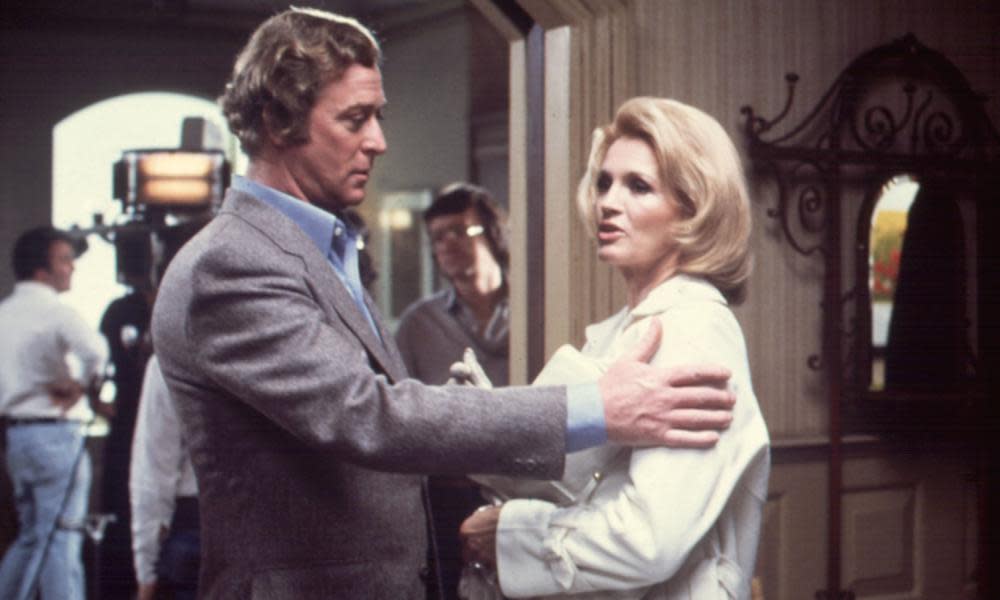My favourite film aged 12: Dressed to Kill

In the early 90s, during my so-called tween years, Brian de Palma’s 1980 movie Dressed to Kill already represented a time capsule from a different era of suspense film-making. By the time it became a regular on US television’s late-night marquee, the film – along with the Italian giallo, a genre from which De Palma lifted much of his operatic style and oneiric visuals – had been succeeded by a decade of low-budget slashers and erotic thrillers. A profusion of full-frontal nudity and graphic violence, once envisioned and choreographed for 35mm widescreen, was increasingly beamed into the small home cinema thanks to the advent of cable television and direct-to-video rentals. De Palma, meanwhile, was deep into a 10-year divertissement of Hollywood action and prestige pictures.
Despite Dressed to Kill’s highly inappropriate content for a suburban child of 12, I was instantly transfixed by a heavily edited version of the film that screened regularly on late-night TV. Like my mother, and my grandmother before her, I had already exhibited a precocious fascination with the horror and suspense genres, encouraged, no doubt, by their programming choices. I would often see these B-films in the movie theatre with my mother as a sort of cinematic bonding ritual. But Dressed to Kill was the first such film I experienced by my lonesome, like a keyhole through which I glimpsed the tenebrous world of adulthood.
Dressed to Kill tells the disturbing story of a murdered suburbanite, a high-class escort and a transgender killer from different, metropolitan worlds whose paths intersect on the streets of New York City. The ostensible lead is Kate Miller (Angie Dickinson), a frustrated housewife and the patient of Upper East Side psychiatrist Robert Elliott (Michael Caine), who seeks out liaisons with strange men to energise her tedious sex life. After an encounter with a nameless museum-goer in his downtown hideaway, she is brutally stabbed by a disguised transsexual, known only as Bobbi, another of Elliott’s patients. The lone witness to Miller’s death, Liz Blake (Nancy Allen) is implicated in the crime by the police and attempts to find the real murderer before she becomes Bobbi’s target. The remainder of the film is a cat-and-mouse game across the city between Blake, Elliott and Bobbi, who goads the doctor with phone messages announcing designs for her next murder.
Much more than the mature plot, however, Dressed to Kill’s kaleidoscopic atmosphere – its watery, soft-focus lens, garish colour palette and flashy, optical tricks such as slow-motion, mirrored surfaces, split screens and dioptres – was a feast for my languorous, pre-teen senses. On several occasions, I would wake up to catch the film at its midpoint or nod off before the ending, allowing the collage of images and music to splice into the edges of my sleep. The tense melodies of Pino Donaggio’s soundtrack and the likeness of an androgyne wielding a straight razor would soon become a Proustian madeleine from which countless reveries of my nocturnal childhood would unfold.
De Palma’s mastery of atmosphere was on no greater display than in the film’s early, museum set-piece – a 10-minute, dialogue-free sequence in which the director’s viewfinder glides around Dickinson’s character and through the Met’s galleries and corridors while she pursues, then is pursued, by a potential suitor. As the scene’s tension and pace builds, the labyrinthine interior assumes the contours of a De Chirico painting, or to my child’s eyes, the floating floorplan of a dream. Multiple viewings would reveal another surprise: a split-second cameo of the murderer embedded in the set dressing.
This scene, followed by another silent, slow-burn sequence that culminates in Miller’s grisly death in an elevator, proved to be an exhilarating initiation into the architecture of suspense. The lead character’s abrupt exit from the screen and the subsequent narrative switcheroo to Blake’s story also demonstrated how film could manipulate red herrings and false leads so that, more than mere plot devices, they appeared to me like celluloid apparitions captured in time. While the role reversals of the “good” doctor and “bad” hooker, and the multiple doubles in the film’s climax, hinted at cinema’s intimate bond to secret identities and masquerade.
These lavish visual and rhetorical sleights of hand fed into the richness of cinema’s dream language.
The film’s pleasures were not only abstract. Within the nests of set-pieces and dream sequences, De Palma’s images also produced a montage of New York City at the beginning of the 1980s, a place and an era that I recognised only from a distance. The elegant uptown and slummy downtown, insular high-rise and turbulent subway car, baroque interior and darkened streetscape. These landmarks helped to plot my own imaginary atlas years before I would move to the city as a university film student and discover its very different, millennial landscape.
To a suburban child with an appetite for suspense, De Palma’s masterpiece of urban atmosphere both terrified and enthralled, and inspired in me a lasting passion for genre cinema.

 Yahoo News
Yahoo News 
